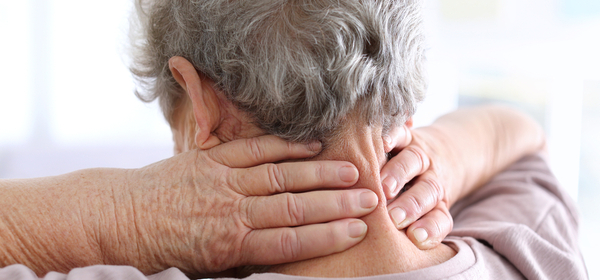One in three Australians aged 65 and over is affected daily by chronic pain, according to a survey conducted by Chronic Pain Australia (CPA).
Chronic pain is Australia’s third most costly health burden, the leading cause of early retirement, and costs the economy more than $34 billion per year, the survey says.
The survey, released on Monday at the start of National Pain Week, reported that 86 per cent of respondents said they had encountered stigma or negative attitudes to the ‘invisible’ problem.
Ninety-eight per cent of respondents said the Government was not doing enough to support them and that chronic pain should be listed as a condition eligible for support via the disability support pension.
The survey also found that 70 per cent disagreed with the Government’s decision to make codeine prescription-only and that 75 per cent wanted their GPs to be able to prescribe medicinal cannabis to treat their pain.
CPA president Coralie Wales said that people living with chronic pain faced a daily battle fighting physical pain, mental health issues and, possibly, financial pressures in not being able to work to their full capacity.
“Feeling unsupported by the Government and being discriminated against, judged or not believed by friends, family and work colleagues can make their situation even more difficult to cope with,” she said.
Some respondents said medical professionals treated them like drug addicts and ‘doctor shoppers’ when they sought pain relief, while others were told their pain wasn’t as bad as they were describing.
“People don’t recognise the seriousness and extent of my daily pain. They assume I’m making it up, or being a sissy,” one respondent said.
“People think I’m faking my pain,” said another.
“[I’ve been] told by friends, family or my boss, ‘But you don’t look sick’,” said another.
Almost 90 per cent of respondents said the cost of attempting to find pain relief was a financial burden.
“While we have reviewed the recent research into medicinal cannabis for the management of chronic pain (that shows it has no benefit), it doesn’t change what respondents from the pain community have told us,” Dr Wales said.
“For many people living with 24/7 pain, current medical options come with side effects that can be quite disabling in themselves and overwhelmingly they want access to other options,” she said.
“Medicinal cannabis represents a new possibility to help treat their chronic pain. What we’re hearing is that people living with chronic pain want simpler access, without feeling like criminals.”
Dianne Wilson, chair of the APA Pain Group, emphasised the importance of movement for chronic pain sufferers.
“It may seem counter-intuitive, but for most chronic pain sufferers, maintaining movement is the best thing they can do. Physiotherapists have the expertise to guide patients through an education and exercise program, pacing and grading their program to suit the patient’s individual needs.”
Do you suffer from chronic pain? Have you found ways to relieve the condition? Do you think the Government should be more supportive of sufferers?
Related articles:
Exercises to relieve chronic pain
How to manage chronic pain
Understanding the science of pain

